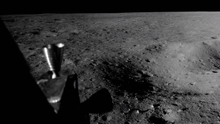The techniques, methods and technologies used to change the velocity, direction or speed of spacecraft. This could involve traditional rocket engines, ion drives, or even theoretical concepts like warp drives.
Subscribe to our weekly newsletter which summarizes all articles from the previous week.
This article has multiple issues. Please help improve it or discuss these issues on the talk page. (Learn how and when to remove these template messages)
|
Spacecraft propulsion is any method used to accelerate spacecraft and artificial satellites. In-space propulsion exclusively deals with propulsion systems used in the vacuum of space and should not be confused with space launch or atmospheric entry.


Several methods of pragmatic spacecraft propulsion have been developed, each having its own drawbacks and advantages. Most satellites have simple reliable chemical thrusters (often monopropellant rockets) or resistojet rockets for orbital station-keeping and some use momentum wheels for attitude control. Russian and antecedant Soviet bloc satellites have used electric propulsion for decades,[not verified in body] and newer Western geo-orbiting spacecraft are starting to use them for north–south station-keeping and orbit raising. Interplanetary vehicles mostly use chemical rockets as well, although a few have used ion thrusters and Hall-effect thrusters (two different types of electric propulsion) to great success.
Hypothetical in-space propulsion technologies describe the propulsion technologies that could meet future space science and exploration needs. These propulsion technologies are intended to provide effective exploration of the Solar System and will permit mission designers to plan missions to "fly anytime, anywhere, and complete a host of science objectives at the destinations" and with greater reliability and safety. With a wide range of possible missions and candidate propulsion technologies, the question of which technologies are "best" for future missions is a difficult one; expert opinion now holds that a portfolio of propulsion technologies should be developed to provide optimum solutions for a diverse set of missions and destinations.[verification needed]
